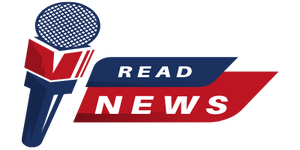Fixed-Rate vs. Adjustable-Rate Mortgages: Pros and Cons
Buying a home is one of the most significant financial decisions you’ll ever make, and choosing the right mortgage is a crucial part of the process. Two of the most common mortgage types are fixed-rate mortgages (FRMs) and adjustable-rate mortgages (ARMs). Each has its own set of advantages and disadvantages, depending on your financial goals and risk tolerance. In this blog post, we’ll break down the pros and cons of each mortgage type to help you make an informed decision.
Fixed-Rate Mortgages (FRMs)
A fixed-rate mortgage offers an interest rate that remains constant throughout the life of the loan, typically for terms of 15, 20, or 30 years. This means that your monthly principal and interest payments remain the same, providing stability and predictability.
Pros of Fixed-Rate Mortgages
- Predictability – With a fixed rate, you know exactly what your mortgage payments will be each month, making budgeting easier.
- Protection from Rate Increases – Since the interest rate is locked in, you’re protected from market fluctuations and potential rate hikes.
- Long-Term Stability – A fixed-rate mortgage is ideal for homeowners who plan to stay in their homes for many years and prefer financial consistency.
Cons of Fixed-Rate Mortgages
- Higher Initial Rates – Fixed-rate mortgages generally have higher starting interest rates compared to ARMs.
- Less Flexibility – If interest rates drop significantly, refinancing is required to take advantage of lower rates, which can involve fees and paperwork.
- May Not Be Ideal for Short-Term Homeowners – If you plan to sell your home within a few years, you might end up paying more in interest compared to an ARM.
Adjustable-Rate Mortgages (ARMs)
An adjustable-rate mortgage typically offers a lower initial interest rate for a fixed period (e.g., 5, 7, or 10 years), after which the rate adjusts periodically based on market conditions. The adjustment is usually tied to an index plus a margin.
Pros of Adjustable-Rate Mortgages
- Lower Initial Interest Rates – ARMs usually start with a lower interest rate than fixed-rate mortgages, making them attractive for short-term homeowners.
- Potential for Lower Payments – If interest rates decrease over time, your mortgage payments may decrease as well.
- Good for Short-Term Homeowners – If you plan to sell or refinance before the adjustable period begins, you can take advantage of the lower initial rates without facing potential rate increases.
Cons of Adjustable-Rate Mortgages
- Uncertainty and Risk – After the fixed period ends, your interest rate can increase, leading to higher monthly payments.
- Potential for Payment Shock – If interest rates rise significantly, your monthly payments could increase dramatically.
- Complexity – ARMs can be more complicated to understand, with various adjustment periods, rate caps, and index factors affecting future payments.
Which Mortgage Type is Right for You?
The best choice depends on your financial situation and long-term plans.
- If you prefer stability and plan to stay in your home for many years, a fixed-rate mortgage is likely the better option.
- If you’re looking for a lower initial rate and plan to move or refinance within a few years, an adjustable-rate mortgage might be a good fit.
Before making a decision, consult with a mortgage professional to assess your specific needs and risk tolerance. Understanding the pros and cons of both options will help you secure the best mortgage for your financial future.
Final Thoughts
Choosing between a fixed-rate and adjustable-rate mortgage is an important decision that can impact your finances for years to come. By weighing the pros and cons, considering your future plans, and seeking professional advice, you can make a well-informed choice that aligns with your homeownership goals.




